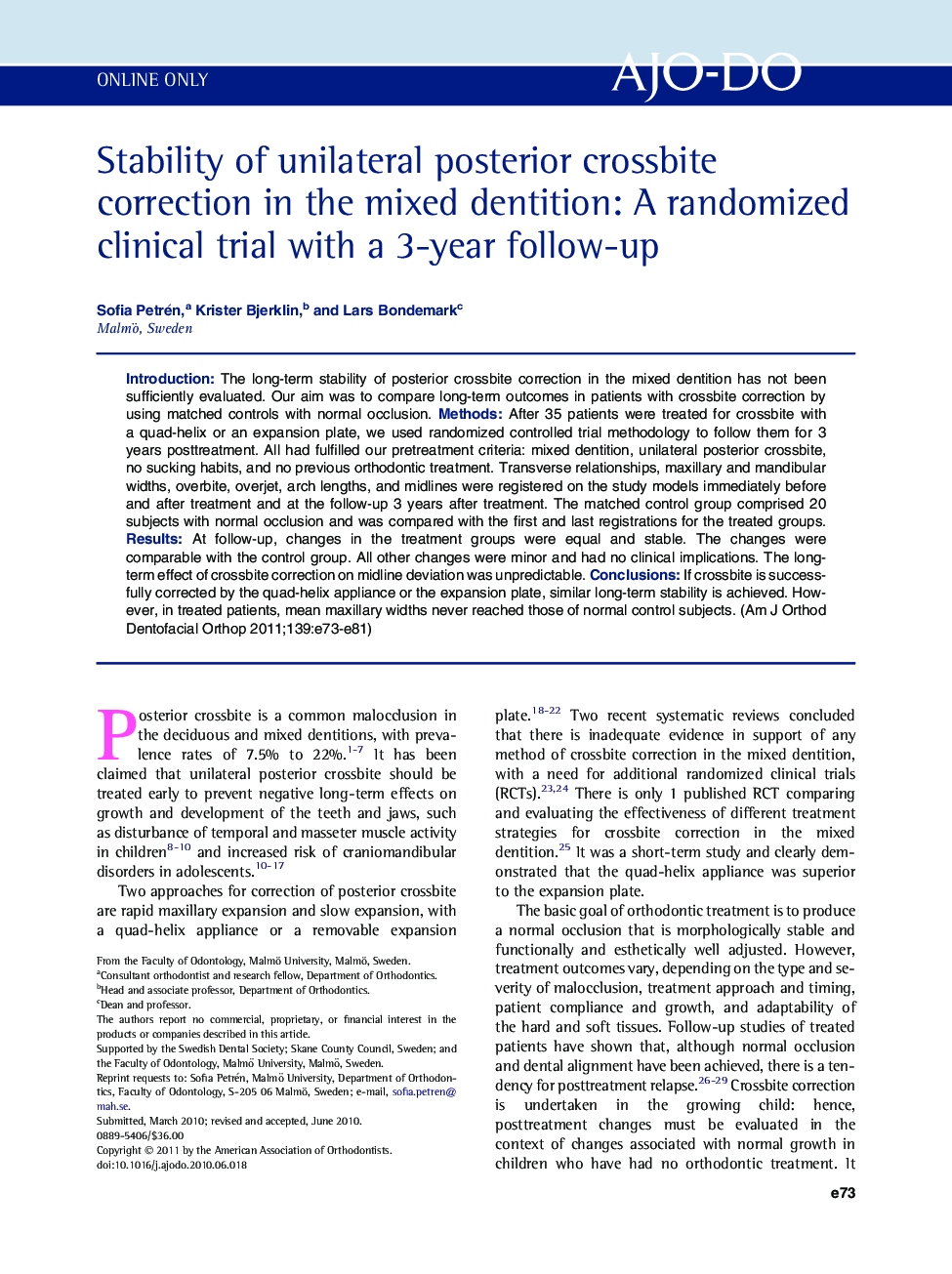| Article ID | Journal | Published Year | Pages | File Type |
|---|---|---|---|---|
| 3117328 | American Journal of Orthodontics and Dentofacial Orthopedics | 2011 | 9 Pages |
IntroductionThe long-term stability of posterior crossbite correction in the mixed dentition has not been sufficiently evaluated. Our aim was to compare long-term outcomes in patients with crossbite correction by using matched controls with normal occlusion.MethodsAfter 35 patients were treated for crossbite with a quad-helix or an expansion plate, we used randomized controlled trial methodology to follow them for 3 years posttreatment. All had fulfilled our pretreatment criteria: mixed dentition, unilateral posterior crossbite, no sucking habits, and no previous orthodontic treatment. Transverse relationships, maxillary and mandibular widths, overbite, overjet, arch lengths, and midlines were registered on the study models immediately before and after treatment and at the follow-up 3 years after treatment. The matched control group comprised 20 subjects with normal occlusion and was compared with the first and last registrations for the treated groups.ResultsAt follow-up, changes in the treatment groups were equal and stable. The changes were comparable with the control group. All other changes were minor and had no clinical implications. The long-term effect of crossbite correction on midline deviation was unpredictable.ConclusionsIf crossbite is successfully corrected by the quad-helix appliance or the expansion plate, similar long-term stability is achieved. However, in treated patients, mean maxillary widths never reached those of normal control subjects.
